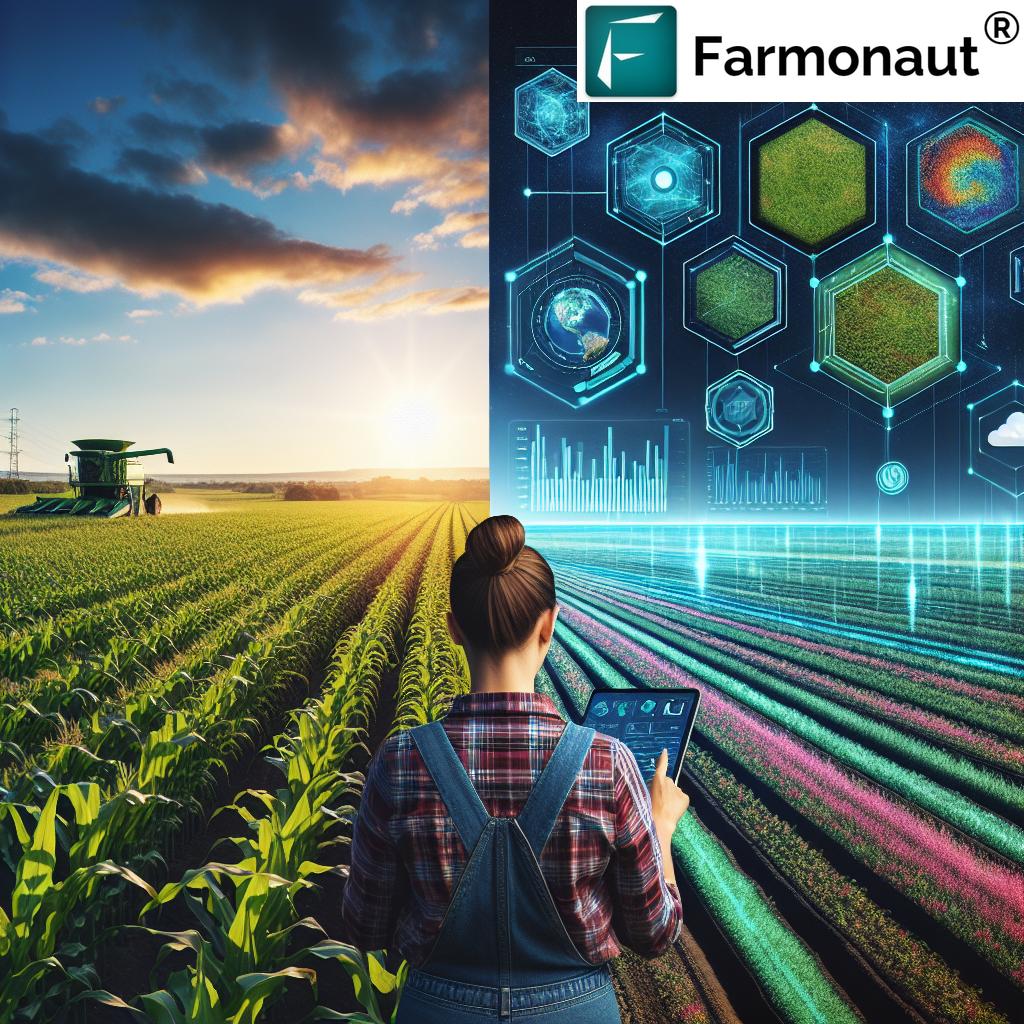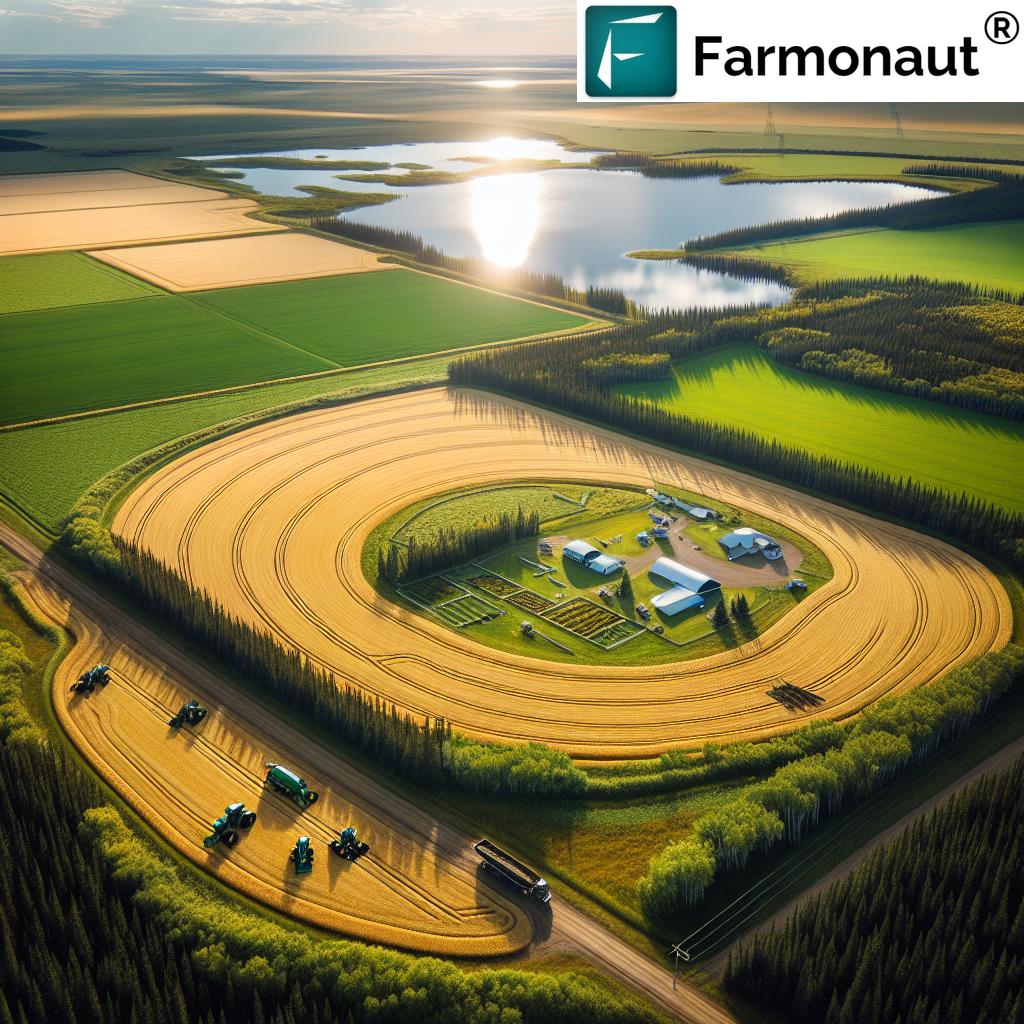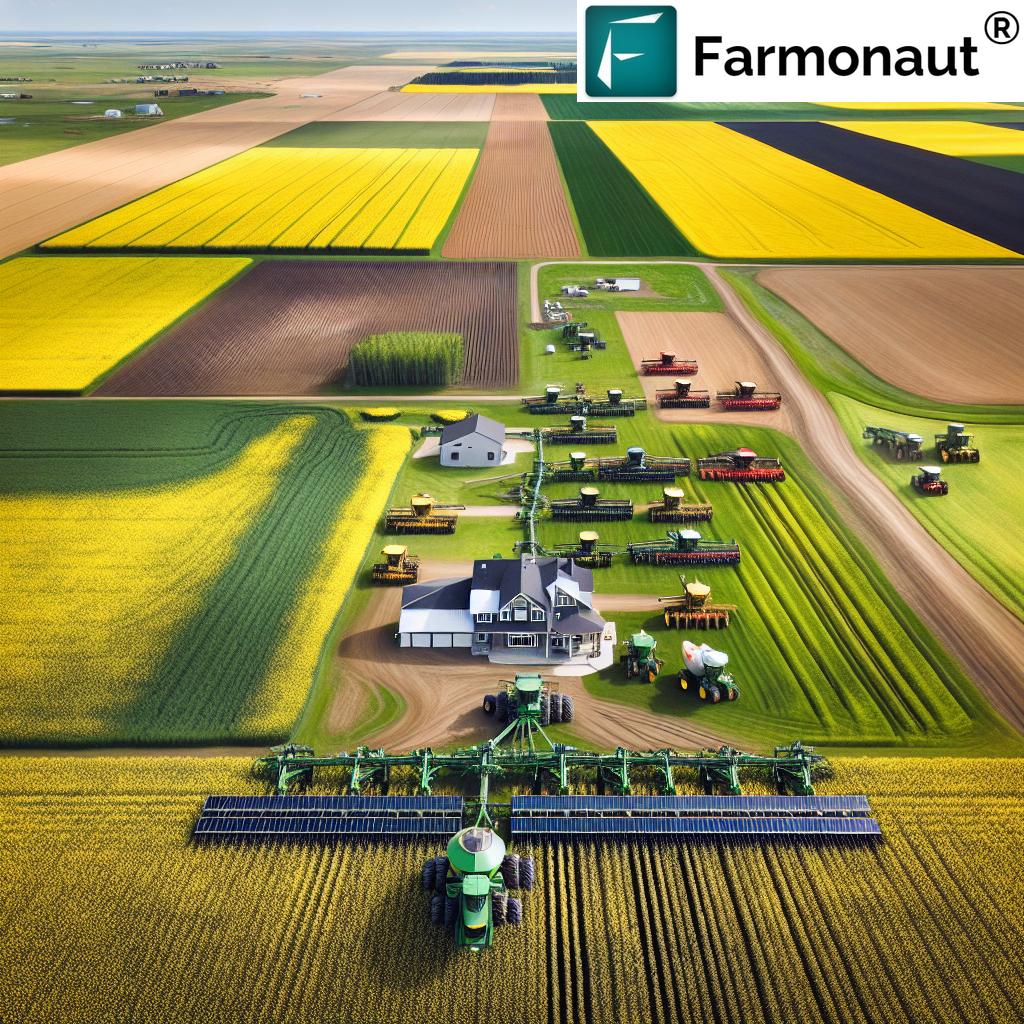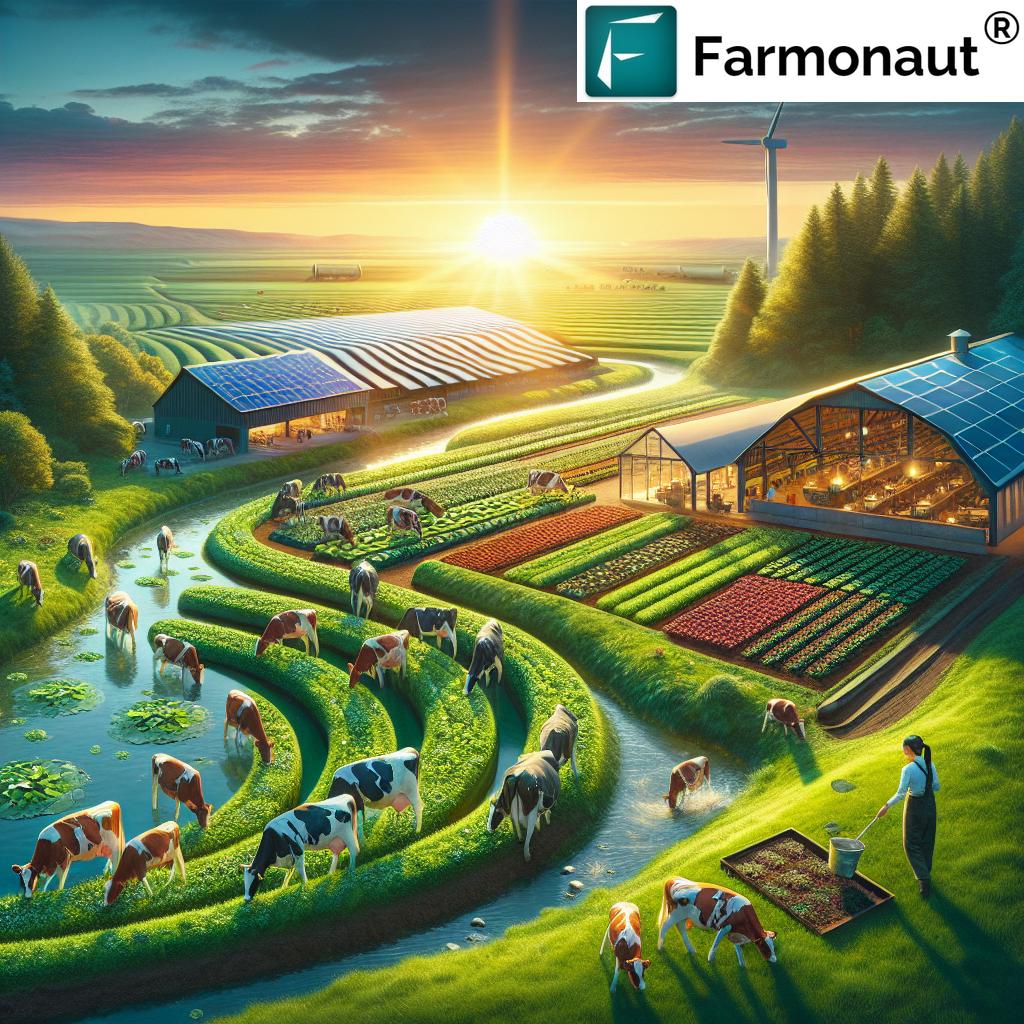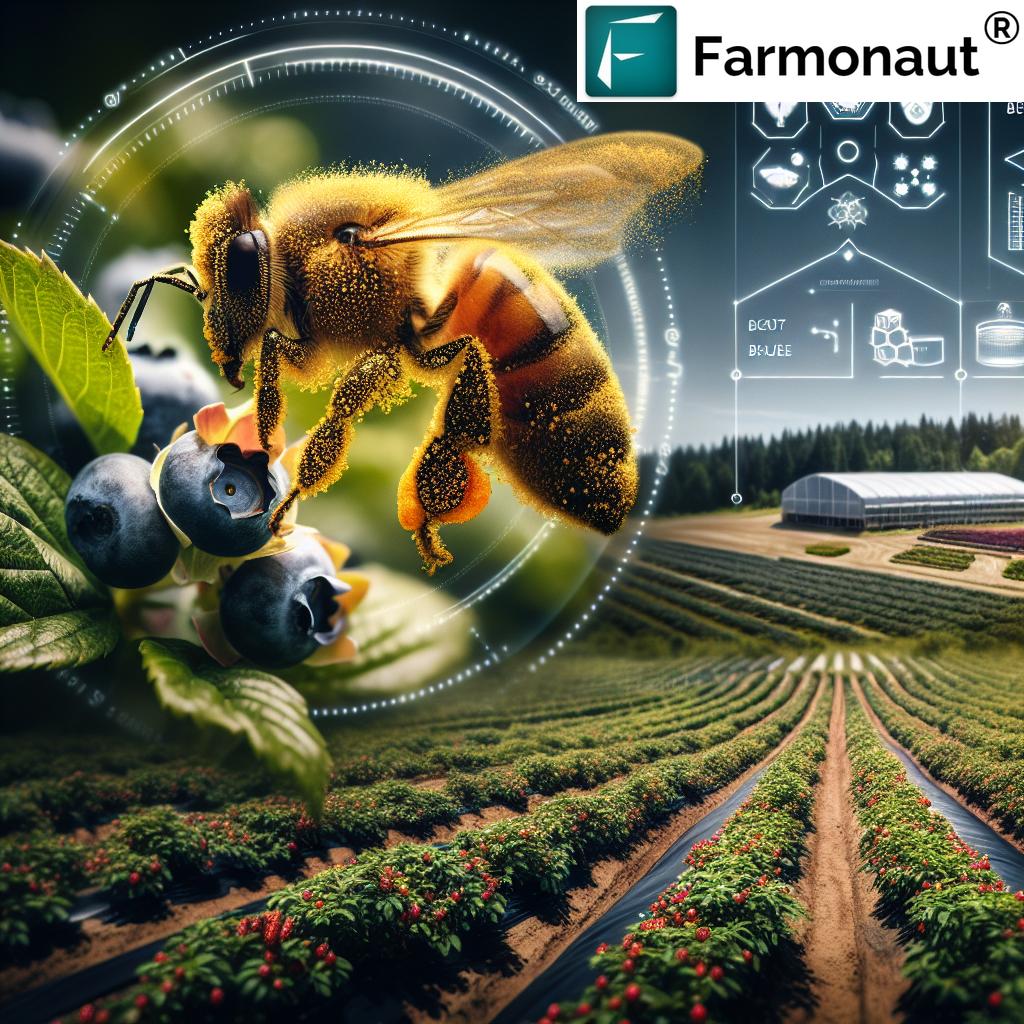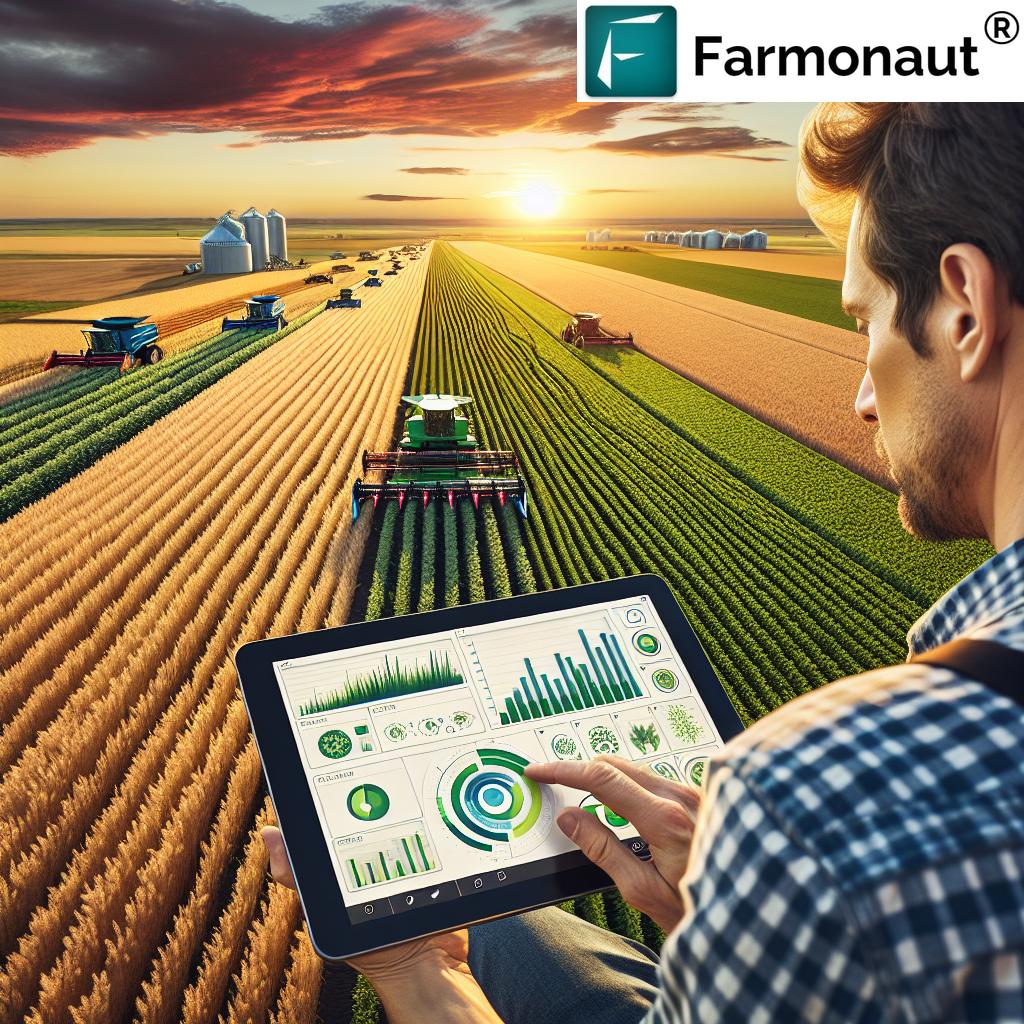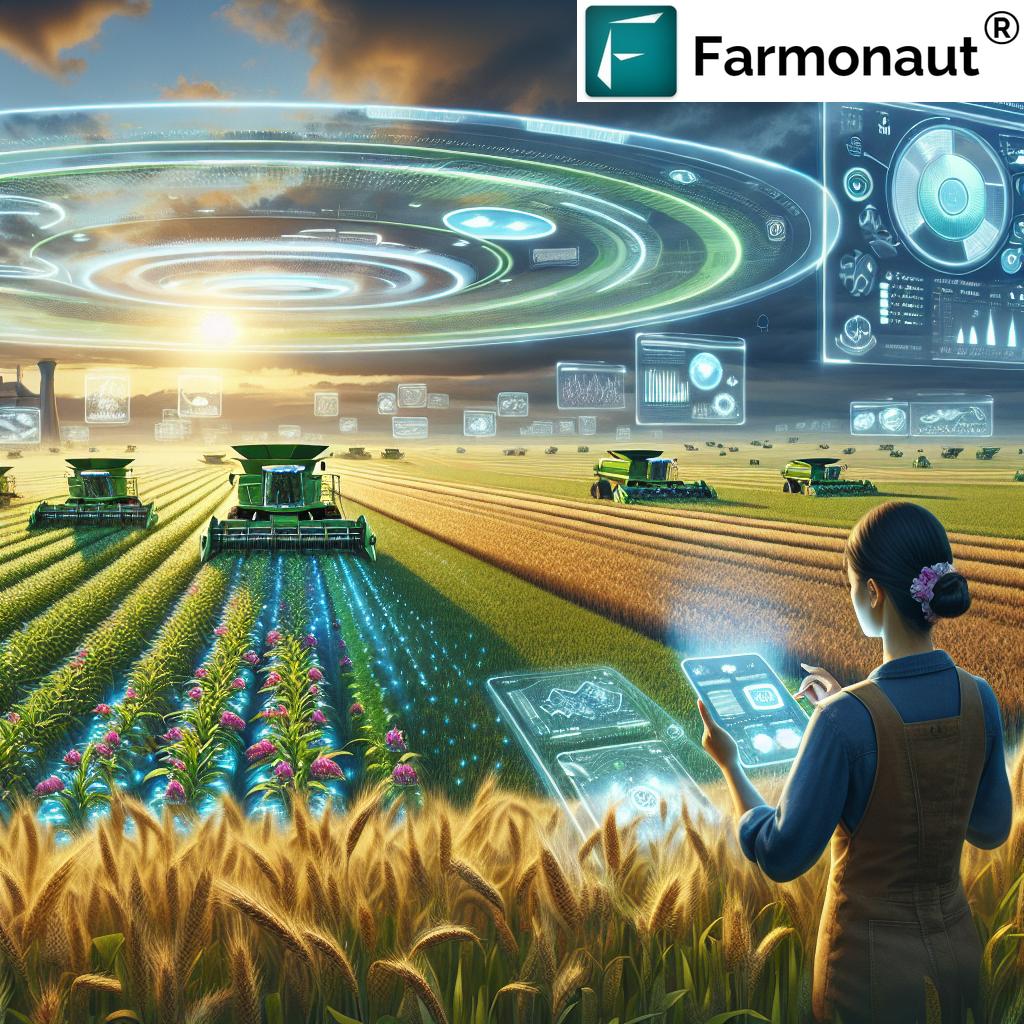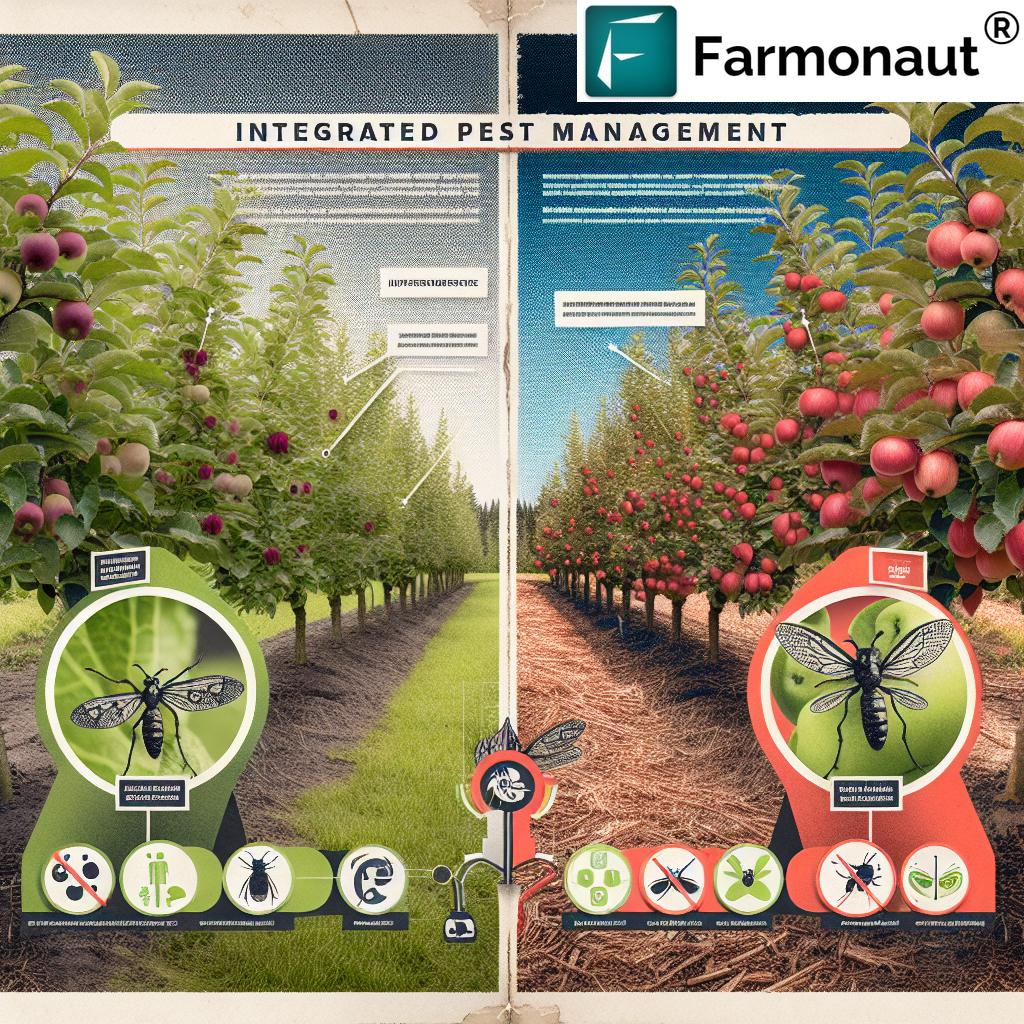Canadian Farmland Prices: Predicting the Future of Agricultural Land Value in 2034
“Canadian farmland prices have increased by over 300% in the last 20 years, outpacing many other investments.”
As we delve into the future of Canadian farmland prices, it’s crucial to understand the dynamic landscape of agricultural land investment. In this comprehensive analysis, we’ll explore the factors shaping farmland values and predict where they might be heading by 2034. Whether you’re a seasoned farmer, an aspiring agricultural entrepreneur, or an investor looking to diversify your portfolio, this blog post will provide valuable insights into the evolving world of Canadian agriculture.
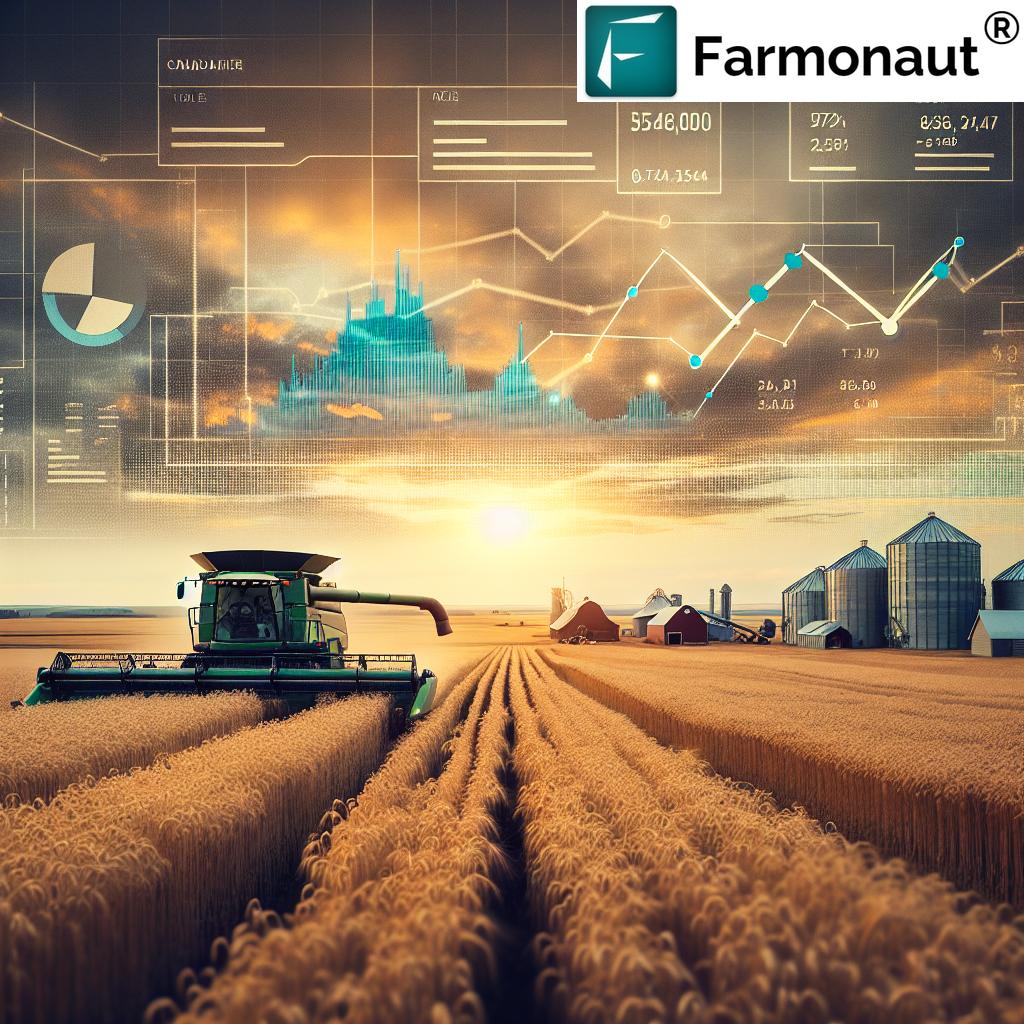
The Current State of Canadian Farmland Prices
Before we look to the future, let’s examine the present state of Canadian farmland prices. In recent years, we’ve witnessed a significant upward trend in agricultural land values across the country. This surge has been driven by various factors, including:
- Increasing global food demand
- Limited availability of arable land
- Low interest rates
- Technological advancements in farming
- Growing interest from investors
These factors have contributed to a robust market for farmland, with prices in some regions reaching record highs. However, the landscape is not uniform across Canada, with significant variations between provinces and even within local markets.
Factors Influencing Future Farmland Prices
As we look ahead to 2034, several key factors are likely to shape the future of farmland prices in Canada:
1. Global Food Demand
The world’s population is projected to reach 8.5 billion by 2030, according to the United Nations. This growth will drive increased demand for food, putting pressure on agricultural systems worldwide. Canadian farmers, with their vast tracts of fertile land, are well-positioned to meet this demand, potentially leading to higher land values.
2. Climate Change and Weather Patterns
Climate change is expected to have a significant impact on agriculture. While some regions may benefit from longer growing seasons, others may face challenges such as increased drought or flooding. These changes could shift the value of farmland based on its ability to adapt to new weather patterns.
3. Technological Advancements
The adoption of precision agriculture technologies, such as those offered by Farmonaut, is likely to increase farm productivity and efficiency. Farms equipped with advanced management systems may command higher prices due to their potential for increased yields and reduced input costs.
4. Government Policies and Regulations
Future agricultural policies, environmental regulations, and trade agreements will play a crucial role in shaping farmland values. Policies that support sustainable farming practices or provide incentives for certain types of production could influence land prices in specific regions.
5. Interest Rates and Economic Conditions
The cost of borrowing and overall economic health will continue to impact farmland prices. If interest rates remain low, it could sustain the current upward trend in land values. However, significant increases in rates could slow price growth or even lead to a correction in some markets.
Predicting Canadian Farmland Prices in 2034
Based on current trends and the factors mentioned above, we can make some educated predictions about farmland prices in Canada by 2034. Here’s a table summarizing our projections:
| Province | 2024 Price (CAD/acre) | 2029 Price (CAD/acre) | 2034 Price (CAD/acre) | Projected Growth Rate (2024-2034) |
|---|---|---|---|---|
| Ontario | 15,000 | 18,750 | 23,400 | 56% |
| Saskatchewan | 2,200 | 2,750 | 3,400 | 54% |
| Alberta | 3,100 | 3,875 | 4,800 | 55% |
| Manitoba | 2,500 | 3,125 | 3,900 | 56% |
| National Average | 5,700 | 7,125 | 8,875 | 56% |
These projections suggest a continued upward trend in farmland prices across Canada, with an average growth rate of 56% over the next decade. However, it’s important to note that these are estimates and actual prices may vary based on local conditions and unforeseen circumstances.
Regional Variations in Farmland Value
While the overall trend points towards increasing land values, it’s crucial to understand that farmland prices can vary significantly between regions. Factors contributing to these variations include:
- Soil quality and fertility
- Proximity to urban centers and transportation networks
- Local climate and growing conditions
- Types of crops or livestock suited to the area
- Regional economic conditions and development pressures
For example, prime agricultural land in Ontario’s Golden Horseshoe region may command significantly higher prices due to its fertile soil and proximity to major markets. In contrast, more remote areas in the Prairie provinces might offer lower-priced land but with potential for large-scale operations.
The Role of Technology in Shaping Future Farmland Values
As we look towards 2034, the integration of advanced technologies in farming practices is likely to play a significant role in determining land values. Precision agriculture tools, such as those provided by Farmonaut, can dramatically improve farm productivity and sustainability.
Farmonaut’s satellite-based crop health monitoring and AI-driven advisory systems offer farmers unprecedented insights into their operations. By leveraging these technologies, farmers can:
- Optimize resource use, including water and fertilizers
- Detect and address crop health issues early
- Make data-driven decisions for improved yields
- Reduce environmental impact through precise management
Farms equipped with these advanced management systems may command higher prices in the future, as they offer the potential for increased profitability and sustainability.
Challenges and Opportunities for New Farmers
As farmland prices continue to rise, accessibility for new farmers remains a significant concern. High land values can create barriers to entry for young or first-time farmers looking to establish their operations. However, this challenge also presents opportunities for innovation in farming practices and business models.
Some strategies that new farmers might consider include:
- Leasing land instead of purchasing outright
- Focusing on high-value, niche crops or livestock
- Embracing technology to maximize productivity on smaller acreages
- Exploring alternative financing options, such as partnerships or crowdfunding
- Participating in government programs designed to support new farmers
“Experts predict Canadian farmland values could potentially double by 2034, driven by global food demand and limited arable land.”
The Impact of Sustainable Farming on Land Values
As environmental concerns continue to shape public policy and consumer preferences, sustainable farming practices are likely to become increasingly important. Farms that demonstrate a commitment to sustainability may see their value increase due to:
- Reduced environmental impact and improved soil health
- Lower input costs through efficient resource use
- Potential for premium pricing on sustainably produced crops
- Eligibility for government incentives or carbon credits
Farmonaut’s technologies can play a crucial role in supporting sustainable farming operations. By providing real-time data on crop health and resource usage, farmers can make informed decisions that balance productivity with environmental stewardship.
Explore Farmonaut’s API for advanced agricultural insights
Long-Term Growth Prospects in Canadian Agriculture
Despite the challenges posed by rising land prices, the long-term growth prospects for Canadian agriculture remain strong. Several factors contribute to this optimistic outlook:
- Canada’s reputation for high-quality agricultural products
- Ongoing research and development in crop sciences
- Potential for expanding into new markets through trade agreements
- Increasing demand for plant-based proteins and specialty crops
- Growing interest in agri-tourism and value-added farm products
These trends suggest that investing in Canadian farmland could offer significant returns over the long term, both for individual farmers and institutional investors.
The Role of GIS in Farm Management and Land Valuation
Geographic Information Systems (GIS) are becoming increasingly important in modern farm management and land valuation. These technologies, which include satellite imagery and mapping tools, offer several benefits:
- Precise mapping of farm boundaries and field characteristics
- Analysis of soil quality and topography
- Monitoring of crop health and yield potential
- Identification of drainage patterns and irrigation needs
- Assessment of land value based on multiple factors
Farmonaut’s GIS-based solutions provide farmers and land assessors with powerful tools for understanding and maximizing the value of agricultural land. By leveraging these technologies, stakeholders can make more informed decisions about land acquisition, management, and development.
Learn more about Farmonaut’s API Developer Docs
Strategies for Land Acquisition in a Rising Market
For those looking to invest in Canadian farmland, developing a sound acquisition strategy is crucial. Here are some approaches to consider:
- Focus on areas with growth potential but currently lower prices
- Consider partnerships or joint ventures to pool resources
- Explore opportunities for value-added improvements to increase land productivity
- Investigate government programs or incentives for land acquisition
- Use tools like Farmonaut to assess land potential before purchasing
By taking a strategic approach and leveraging available technologies, investors can identify opportunities that align with their goals and budget constraints.
The Future of Crop and Livestock Markets
The value of farmland is intrinsically tied to the markets for crops and livestock. As we look towards 2034, several trends are likely to influence these markets:
- Increased demand for plant-based proteins
- Growing markets for specialty and organic crops
- Potential shifts in crop suitability due to climate change
- Adoption of precision livestock farming techniques
- Development of new crop varieties through genetic research
Farmers who can adapt to these changing market conditions and leverage technologies like Farmonaut’s crop monitoring systems may be better positioned to maximize the value of their land.
The Impact of Weather and Climate on Farmland Values
Weather and climate conditions play a crucial role in determining farmland values. As we approach 2034, several climate-related factors could influence Canadian agricultural land prices:
- Changing precipitation patterns affecting water availability
- Increased frequency of extreme weather events
- Shifts in growing seasons and crop suitability
- Potential for new pest and disease pressures
Farmers who utilize advanced weather monitoring and prediction tools, such as those offered by Farmonaut, may be better equipped to mitigate climate-related risks and maintain or increase their land’s value.
The Role of Interest Rates in Farmland Investments
Interest rates have a significant impact on farmland prices and investment decisions. Low interest rates have contributed to the recent surge in land values by making borrowing more affordable. As we look towards 2034, potential changes in interest rates could affect the market in several ways:
- Higher rates could slow price growth or lead to price corrections
- Lower rates might continue to fuel demand and price increases
- Fluctuating rates could create opportunities for strategic buying or selling
Investors and farmers should closely monitor interest rate trends and factor them into their long-term planning and land acquisition strategies.
The Future of Small Farms in Canada
As land prices continue to rise, the viability of small farms remains a concern. However, several factors could support the future of small-scale farming in Canada:
- Growing consumer interest in locally produced food
- Opportunities in niche and specialty crop markets
- Adoption of technologies that improve small farm efficiency
- Development of direct-to-consumer sales channels
- Government support for small and family-owned farms
Small farmers who leverage technologies like Farmonaut’s precision agriculture tools can optimize their operations and potentially increase the value of their land, even with limited acreage.
Conclusion: Navigating the Future of Canadian Farmland Prices
As we look towards 2034, the Canadian farmland market presents both challenges and opportunities. While rising prices may create barriers for new entrants, they also reflect the enduring value and potential of agricultural investments. By staying informed about market trends, leveraging advanced technologies like those offered by Farmonaut, and adopting sustainable farming practices, stakeholders in Canadian agriculture can position themselves for success in the evolving landscape of farmland values.
Whether you’re a farmer looking to expand your operations, an investor seeking to diversify your portfolio, or a policymaker working to support sustainable agriculture, understanding the factors that will shape farmland prices over the next decade is crucial. By embracing innovation, adapting to changing market conditions, and prioritizing sustainable land management, we can work together to ensure a vibrant and prosperous future for Canadian agriculture.
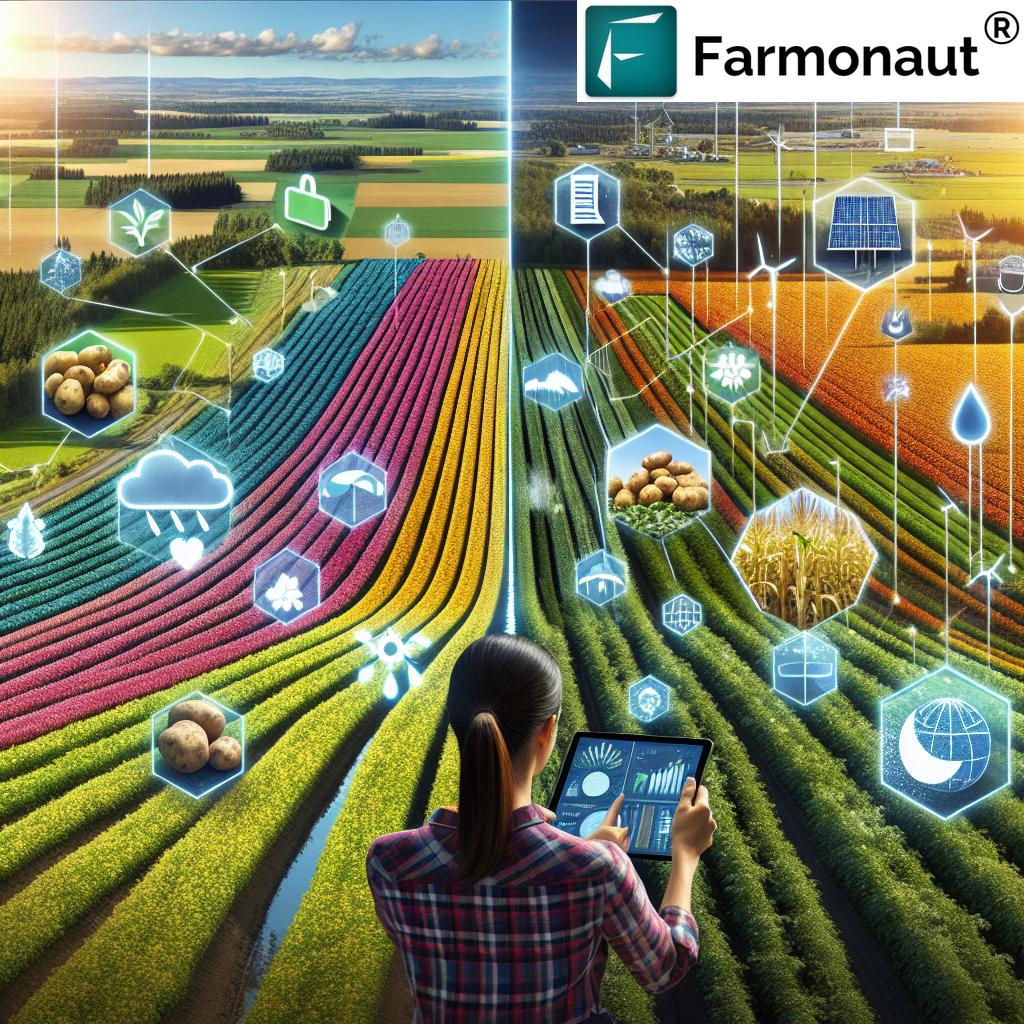
Farmonaut Subscriptions
Frequently Asked Questions
- Q: What factors are driving the increase in Canadian farmland prices?
A: Key factors include growing global food demand, limited arable land, low interest rates, technological advancements in farming, and increased investor interest in agricultural assets. - Q: How might climate change impact farmland values in Canada by 2034?
A: Climate change could lead to shifts in growing seasons, changes in crop suitability for different regions, and increased risk of extreme weather events. These factors may cause fluctuations in land values based on a region’s ability to adapt to new conditions. - Q: What strategies can new farmers use to enter the market despite rising land prices?
A: New farmers can consider leasing land, focusing on high-value niche crops, leveraging technology for increased efficiency, exploring alternative financing options, and participating in government support programs for new farmers. - Q: How can technology like Farmonaut’s solutions impact farmland productivity and value?
A: Farmonaut’s satellite-based crop monitoring and AI advisory systems can help farmers optimize resource use, improve crop health, and make data-driven decisions. This increased efficiency and productivity can potentially enhance the value of farmland. - Q: What role do sustainable farming practices play in future land values?
A: Sustainable farming practices are likely to become increasingly important, potentially leading to higher land values for farms that demonstrate environmental stewardship. This is due to reduced environmental impact, lower input costs, and potential premium pricing for sustainably produced crops.
As we navigate the future of Canadian farmland prices, staying informed and adaptable will be key to success in this dynamic market. By leveraging cutting-edge technologies and embracing sustainable practices, stakeholders in Canadian agriculture can position themselves to thrive in the years leading up to 2034 and beyond.





